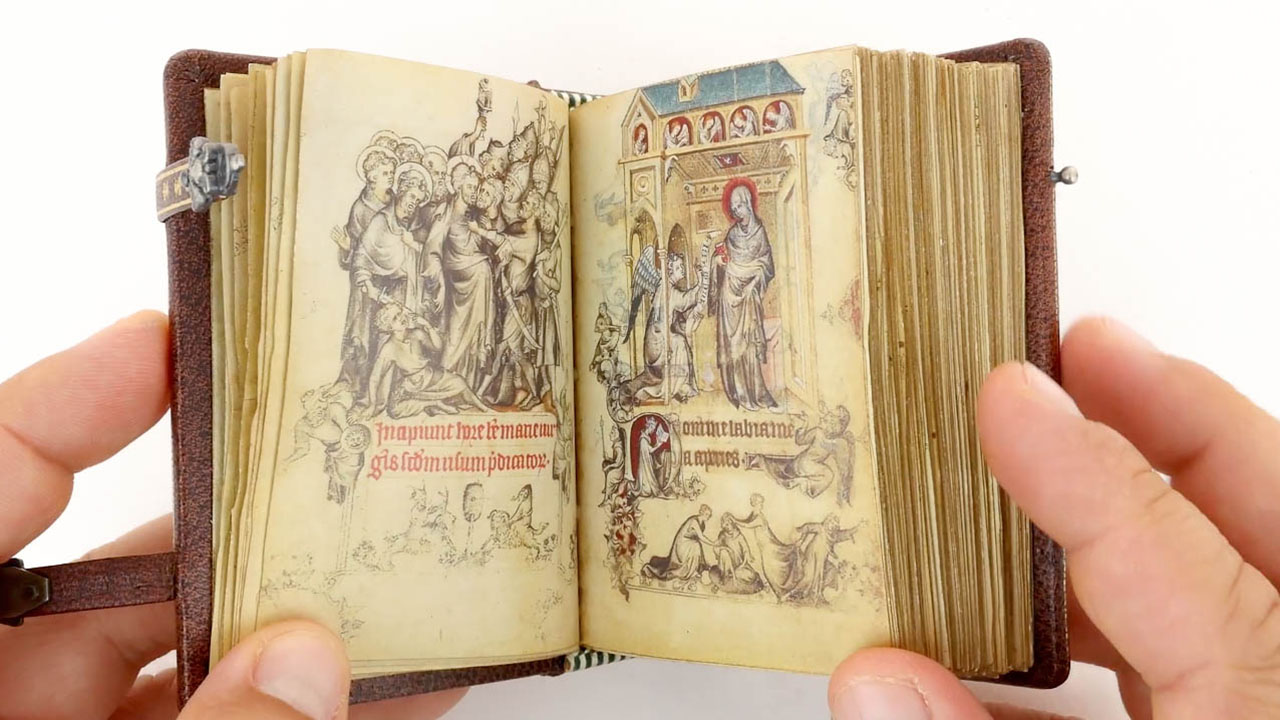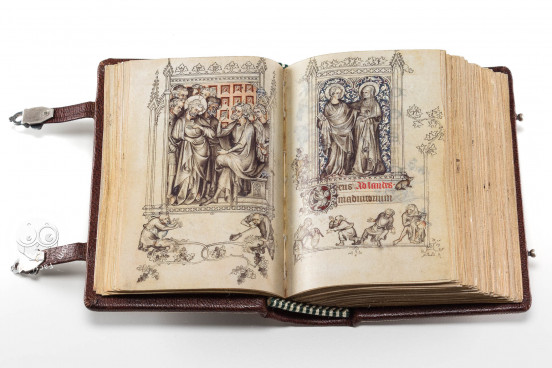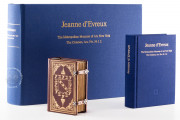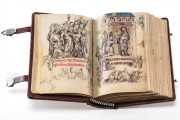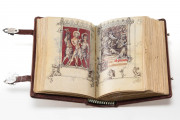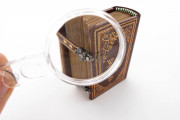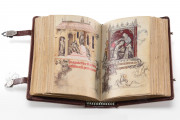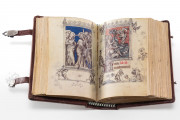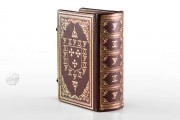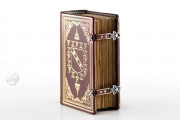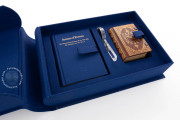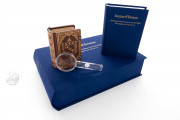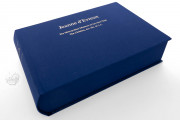Diminutive in size, the Hours of Jeanne d'Evreux was made between 1324 and 1328 and quickly became the esteemed trendsetter of private royal manuscripts for generations to come. Created for Jeanne d'Evreux (d. 1371), consort of King Charles IV of France, it was illuminated in Paris by Jean Pucelle, whose surviving documented works are few. The Parisian illuminator, nonetheless, was renowned in his own day and made a lasting impact on the history of illumination. The Hours of Jeanne d'Evreux facsimile edition preserves this groundbreaking manuscript that influenced French illumination for generations.
Book of Hours of Jeanne d'Evreux: An Intimate Prayer Experience
The manuscript offers insight into the prayer life of the Christian queen. It contains a calendar, the Hours of the Virgin, Penitential Psalms, a litany, and the Hours of Saint Louis. A pair of miniatures introduces each of the eight devotions of the Hours of the Virgin, pairing an image from the infancy of Christ with one from the Passion. Tiny and without a trace of the gold or silver commonly found in royal manuscripts, the Hours of Jeanne d'Evreux brims with drolleries in the margins. The Book of Hours of Jeanne d'Evreux showcases Pucelle's innovative approach to royal manuscript illumination through its distinctive grisaille technique.
Hours of Saint Louis
Following the pair of images that opens the Hours of Saint Louis, a single large miniature chronicling the life of the saintly king introduces each of the remaining hours of Saint Louis. The subjects largely derive from the biography written by Guillaume de Saint-Pathus.
A Grisaille Prototype
The grisaille technique—painting in shades of gray and brown—was popularized by Jean Pucelle and his collaborators in Paris. Scholars have tied the technique to inspiration from stained glass and the artist's interest in line and drawing. The paintings in Jeanne's book were achieved with both quill and brush. Color was used sparingly to accent some figures, architecture, and backgrounds in the miniatures, creating what scholars call semi-grisaille.
Semi-grisaille lends a sculptural quality to the figures, especially when paired with the touches of lilac and turquoise used here. The technique soon became a hallmark of French illumination and was commonly found in books made in Paris and destined for the royal family and its inner circle. Modern facsimile reproductions capture the subtle tones and sculptural quality that made the Hours of Jeanne d'Evreux revolutionary.
Animation in the Margins
The neat Gothic Textualis script is complemented by entertaining line fillers that extend into the margins, filling the manuscript with unicorns, rabbits, women washing their hair, and other delightful images.
About the Making of Manuscripts
Some marginal imagery relates to reading and writing and interacts directly with the text: a scribe armed with quill and inkpot supplies an o in the text (fol. 55v), another seems to dot an i (fol. 43r), while a bishop is engrossed in a book (fol. 195r). Some thematic relationships have been found between the full-page compositions and the marginalia.
"Very Small Little Book of Prayers"
Charles IV had the book made as a gift for his young bride Jeanne d’Evreux. She is depicted reading (fol. 16r) and kneeling before an image of Saint Louis (fol. 102v). The queen left the manuscript in her will to Charles V (1338-1380), King of France, describing it as a "very small little book of prayers that Charles, God keep his soul, had made for madame, which Pucelle illuminated."
Jeanne d'Evreux Hours: From Duke of Berry to The Met Museum
The tiny gem made it into the collection of Jean de France (1340-1416), Duke of Berry, and may have encouraged his interest in grisaille images. The book was confiscated from the Rothschild collection during World War II. Following the German retreat, the book was found hidden in a wastepaper basket in hopes that it might escape detection. It was fortunately discovered and returned to its owners. The book was acquired by the Metropolitan Museum in 1954. Today housed at The Met Cloisters, the Hours of Jeanne d'Evreux remains accessible through premium facsimile editions that reproduce Pucelle's delicate artistry in remarkable detail.
We have 1 facsimile edition of the manuscript "Hours of Jeanne d'Evreux": Stundenbuch der Jeanne d'Evreux facsimile edition, published by Faksimile Verlag, 1998
Request Info / Price
